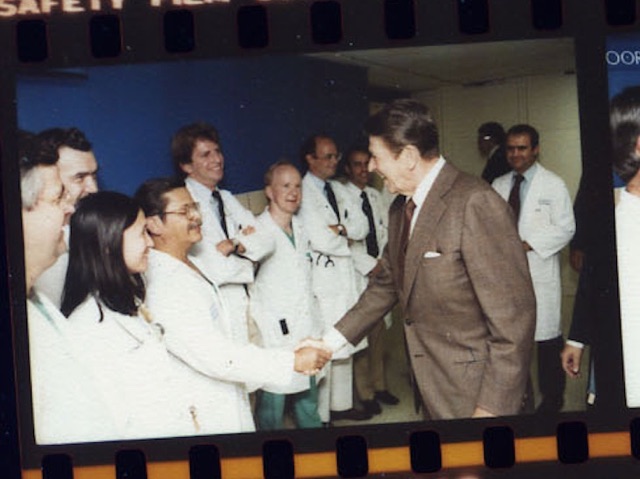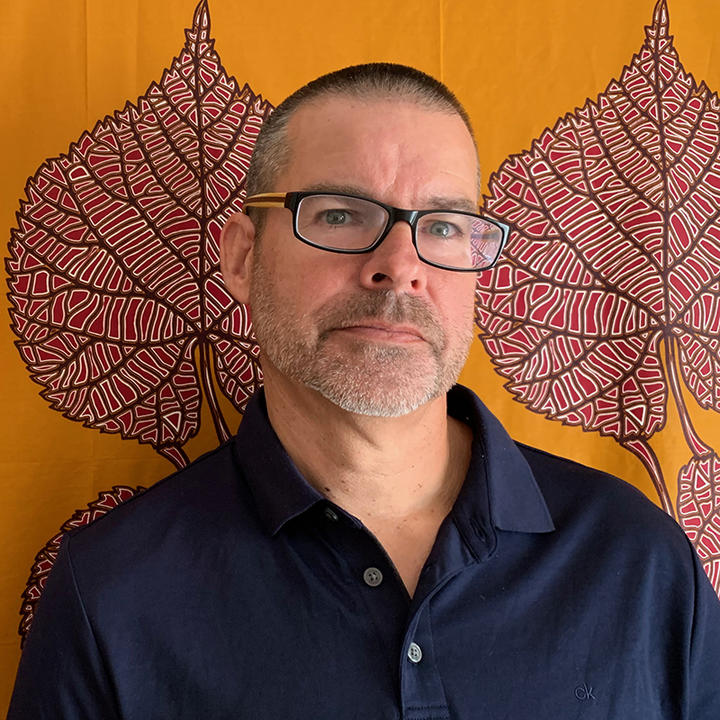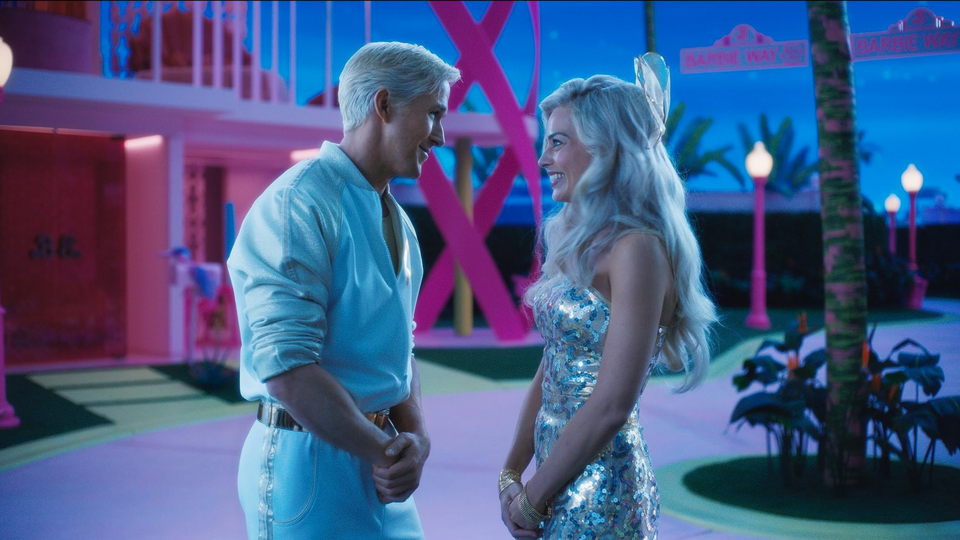Rethinking Nature as a Business Partner
Corporate responsibility shouldn’t just be about efficiency. A new framework asks businesses to consider the intrinsic value of the natural world — and act accordingly.


Based on research by Douglas A. Schuler, Andreas Rasche (Copenhagen Business School), Dror Etzion (McGill Unversity) and Lisa Newton (Fairfield University)
Key findings:
- The U.S.-American concept of corporate environmental ethics emerged in the late 19th century, when it became clear that exploiting the nation’s lumber supply was no longer sustainable.
- Today, “corporate social responsibility,” “environment management” and “corporate political activity” are all familiar terms — but ones fraught with confusion.
- In the long view, all business benefits from and requires access to nature’s riches.
Business hasn’t historically seen nature as a friend. In the United States, the concept of environmental ethics only emerged at the end of the 19th century, when it became clear that exploiting the nation’s lumber supply was no longer sustainable.
In response, government and industry joined together to create legislation setting aside critical forestland. Similarly, almost 100 years later, when the nation’s water and air reached unprecedented levels of contamination, the U.S. government implemented new pollution standards. Firms began to learn it was possible to do business in a way that both preserved their profits and the environment.
Today, terms such as “corporate social responsibility,” “environment management” and “corporate political activity” are all supposed to reflect this notion. But corporate practice toward the environment remains fraught with tension. Is there any reason beyond immediate gain for businesses to protect the environment?
In a recent paper, Rice Business professor Douglas Schuler and coauthors Andreas Rasche of Copenhagen Business School, Dror Etzion of McGill Unversity and Lisa Newton of Fairfield University examined this question, proposing what corporate responsibility would look like if businesses saw saving the environment as being valuable in and of itself.
As a society, Schuler and his team argue, we already do that. We don’t treat the Great Smoky Mountains, or Yosemite National Park or Sequoia National Park as resources for future exploitation. Instead, we protect these treasures because their existence is valuable in and of itself — and to the lives we want to lead.
Thus, in 1964, when people began flocking to national parks in numbers large enough to endanger them, Congress created a new designation, the “wilderness area,” for tracts of land that would be preserved as forever wild. It was the first official U.S. recognition that the environment provides humanity with “services” beyond a supply of raw materials — services such as stabilizing the watershed, cleaning the air and protecting natural species.
Once we think of the environment as having value beyond a source of direct economic gain, it’s a short leap to perceiving animals as having certain intrinsic value — and rights — too, the researchers note. Similarly, one can imagine entire ecosystems having a fundamental right to survive and flourish. The school of thought known as deep ecology goes further, maintaining that just as people should not be allowed to exploit other people, they should not be allowed to exploit the ecosystem.
Some of this thinking may be too far into the woods for the average corporation, Schuler’s team acknowledges. But, he and his colleagues argue, there is real value in incorporating non-utilitarian environmental concepts into business culture. Most big companies already fund environmental management, corporate responsibility and political activities. But, the scholars add, they need to think of environmental defense as more than simply turning off the office lights at night.
Imagine, for example, an environmental management policy that recognizes that sustainability practices should not be defined only by the benefits they bring shareholders. In this view, managers take into account both the upstream and downstream effects of potential polluting activities — and factor them all into their decisions. Then corporations would understand such issues as risk differently. It’s already been done: IKEA, Levi’s and Unilever, for example, have recognized that multinational companies cannot exist in a world devoid of trees and fresh water or filled with oceans laden with plastic.
Instead of managers simply pursuing established rules — “turn off the lights when you leave work” — Schuler and his team propose that they could act as individuals, charged with finding alternative ways to view the corporate role toward nature. In this scenario, corporate managers would essentially lead the corporation’s move from a profit-only framework to one in which sustaining the planet — which, of course, ultimately sustains the corporation — is itself a critical business goal.
Corporate social responsibility would also take on a different tone if the view of environmental priorities were longer. Already, a few corporations have taken major steps toward environmental protection even when there’s no immediate financial benefit. Consider the widow of North Face cofounder Doug Tompkins, who donated one million acres to Chile for new national parks in the Patagonia region.
True, the riches of the natural world helped create the North Face empire and are essential if the company is to stay in business in the future. In the long view, however, all business — and all human survival — depends on stewarding nature’s riches. It’s imperative for firms to value, and preserve, those resources now.
Schuler, D., Rasche, A., Etzion, D., & Newton, L. (2017). Guest Editors’ Introduction to Business Ethics Quatertly, 27.2: “Corporate sustainability management and environmental ethics,” 213-237.
Never Miss A Story
You May Also Like
Keep Exploring
Rules Of The Game
How does a U.S. fraud prevention measure affect foreign firms?


Based on research by Jefferson Duarte, Katie Kong, Lance A. Young and Stephan Siegel.
How Does A U.S. Fraud Prevention Measure Affect Foreign Firms?
- In the wake of corporate fraud scandals, the Sarbanes-Oxley Act (2002) imposed major regulations upon corporations.
- Foreign firms that want to list in the U.S. must comply with these regulations.
- Reaction to Sarbanes-Oxley from foreign firm stakeholders was split: Inside management and majority shareholders were less inclined to list in the U.S., while outside minority investors were more inclined to list in the U.S.
What do you think about SOX?
If you think they could go all the way next season, this article is for you.
SOX is not the team you love (or hate) on the baseball diamond: It's short for the 2002 Sarbanes-Oxley Act, the rare regulatory measure passed with hearty bipartisan support. Only three members of the House of Representatives, and nobody in the Senate, voted against the biggest package of corporate reform legislation in 60 years. Designed to prevent corporate accounting fraud, Sarbanes-Oxley was a response to a rash of high profile, enormously costly corporate financial fraud cases. In their wake, Enron, WorldCom and Tyco all became synonymous with cooking books. The cost of these cases to the economy has been estimated at $35 billion.
Key provisions of SOX included a mandate for senior management to personally certify the accuracy of financial statements, and a requirement for internal controls and reporting methods on the adequacy of those controls.
At the time it was passed, the legislation was assessed in terms of its ability to prevent future accounting scandals. Now, with the passage of time and insights from recent research, a new element can be considered: How have the regulations of SOX affected foreign firms?
The answer seems to come from left field. According to a study by Rice Business professor Jefferson Duarte and co-authors Katie Kong, Lance A. Young and Stephan Siegel of the University of Washington, foreign firms are less likely post-SOX to list in the United States relative to the UK. Yet the average abnormal return of a foreign firm listing in the U.S. is about 4 percent higher after SOX.
How could this be?
It turns out that the regulation’s impact differs between corporate insiders and minority shareholders. While foreign firms’ insiders – that is, management and controlling shareholders – believe that SOX makes extracting value in the U.S. too costly, outside investors tend to see SOX as a boon to investment value.
Of course, these investors realize the increased cost involved with incorporating SOX regulations. They just believe that the value gained outweighs it. But outside investors don’t make the decision of where to list. The insiders do. In the end, the people who have to do the work of complying with SOX are the ones who hesitate.
There is one caveat: Firms in countries that have strong existing regulation have been more likely to list in the U.S. after SOX. If you are already used to playing by the home team rules, in other words, you are less daunted by the away team rules. Rules, after all, are rules.
So the impact of SOX on foreign firms is split: Those used to rules at home are more likely to list in the U.S., while those less used to rules aren’t as likely to list.
In the end, just as in sports, the rules are meant to preserve the integrity of the game. It is, always, a tricky balance. While no one wants regulation to be prohibitive, everyone benefits when it’s preventative.
Now, play ball.
Jefferson Duarte is an associate professor of finance and the Gerald D. Hines Professor of Real Estate Finance at the Jones Graduate School of Business at Rice University.
To learn more, please see: Duarte, J., Kong, K., Siegel, S., & Young, L. (2014). The impact of the Sarbanes–Oxley Act on shareholders and managers of foreign firms. Review of Finance, 18(1), 417-455.
Never Miss A Story
You May Also Like
Keep Exploring
Merit Badge
Why immigrants bring extra human potential.


By Claudia Kolker
Why Immigrants Bring Extra Human Potential

The photo instantly takes me back to the 1980s: boxy suits and lank haircuts, and most of all, the big-shouldered man with a broad smile. It’s a picture of President Ronald Reagan thanking the doctors who saved his life, sent to me by a relative. The man shaking Reagan’s hand in the photo was her father, George Morales — an immigrant from Mexico.
Thirty-seven years ago, Reagan became the first president to survive being shot while in office. He lived, it is believed, because of the expert care he received at George Washington University Hospital. Less widely known is that every doctor on Reagan’s anesthesia team was foreign-born.
As conflict over newcomers in our culture boils over, one argument contends that we simply can’t afford more immigrants who are poor, unskilled or even from certain countries. Only foreigners who show merit, this thinking goes, deserve entrance.
But what constitutes merit? To those making the argument, it’s simple: established credentials, tangible wealth, preferred nationalities. It’s a definition that would have excluded key doctors who saved Reagan’s life.
Back on that terrifying March day in 1981, Secret Service agents scrambled into scrubs to guard the surgery. Doctors and support staff raced Reagan’s gurney to the operating room. Then they placed him in the hands of a team of immigrants for anesthesia.
“One thing really struck me, looking at our team,” recalled Manfred Lichtmann, a staff anesthesiologist at the hospital. “Each of us had emigrated to the United States.”
Morales, who died in 2003, came from Mexico. Vickie Sidou, the anesthesiologist on call, emigrated from Greece. May Chin, then a resident at the hospital, was born in Malaysia. And Lichtmann had been a child refugee from Adolf Hitler’s Germany.
Lichtmann’s first years in the United States were disastrous. His parents fell ill, and he grew up in a children’s home. He didn't learn English until first grade, where his first word, because he heard it so much, was “S.O.B.”
Finally, after medical school and service in Vietnam, Lichtmann joined George Washington University Hospital, where he met Morales.
“We kiddingly said that if President Reagan’s surgery failed to go well, we could be deported,” Lichtmann said. “We were proud to be immigrants and proud to be Americans.”
Like Lichtmann, Morales had fled his home country as a child refugee. Born in Nicaragua, he was shipped to Mexico — where he would become a citizen — at the age of 11. His father, a judge who once ruled against the dictator Anastasio Somoza, had sent the boy abroad to protect his life.
“George Morales was remarkable,” Lichtmann said. “Before the Republican nomination for president, I kept calling Sen. Lindsey Graham’s office but never got through. I wanted to tell him, you have a candidate who is calling Mexicans criminals — you need to know that a doctor from Mexico helped save Reagan’s life.”
No matter what one thinks about border walls, research shows that foreign-born people — rich and poor — have higher levels of one measurable merit that our economy can’t do without: potential. That is why it’s a fallacy to suppose we only have resources to absorb those who are already privileged. Immigrants themselves are the resource. And there is no sure way to predict who will skyrocket into the kind of success that changes American life.
The results of that potential are evident everywhere. You can see it in the 83 percent of winners in a youth science talent search who have foreign-born parents. You can also see it in the fact that immigrants file twice as many patents as native-born inventors, and also in the behaviors that help immigrants live an average of two years longer than people born here.
You can even quantify some of this potential. Research by Hajo Adam, a former business professor at Rice Business in Houston, suggests that living abroad markedly raises “self-concept clarity” — or confidence in one’s beliefs and goals. This quality is linked to an array of benefits, including more committed relationships, better health and even greater clarity about immediate career goals.
“It stands to reason that all the benefits from living abroad and the associated boost in self-concept clarity apply to most immigrants,” Adam said.
So it may not simply be chance that three of the doctors who treated Reagan were immigrants, equipped with some extra measure of purpose.
As the doctors at George Washington lifted the president to the operating table, Lichtmann recalled Reagan saying, “I presume you are all Republicans.” It was a quip, meant to reassure them. But it was also an acknowledgment that everyone there shared a clear, common purpose.
“We are all Republicans today, Mr. President,” the trauma chief answered.
I thought of that exchange as I studied the photo of Reagan and the doctors who saved him. Regardless of how each doctor in the photo got there, likely every one of them was the product of someone else’s will to get to this country and to flourish. Thank goodness, for all of us, America allowed that potential to grow.
Claudia Kolker is the associate director of intellectual capital at Rice Business and author of “The Immigrant Advantage: What We Can Learn From Newcomers To America About Health, Happiness, and Hope."
Hajo Adam is a former assistant professor of management at the Jones Graduate School of Business at Rice University.
This article also appeared in the Washington Post as "The immigrant doctors who saved Ronald Reagan’s life"
Never Miss A Story
You May Also Like
Keep Exploring
Medalla al Mérito
Los médicos inmigrantes que salvaron la vida a Ronald Reagan


Por Claudia Kolker. Traducción por Mayra Flamenco.
Los médicos inmigrantes que salvaron la vida a Ronald Reagan

La fotografía me trasladó hasta los años 80 por el traje a cuadros y los peinados, casi todos con el pelo liso. En la foto aparece el presidente Ronald Reagan, con su amplia sonrisa y su ancha espalda, agradeciendo al grupo de médicos que le salvó la vida. El hombre a quien Reagan estrecha la mano es George Morales, un inmigrante mexicano. Por medio de un familiar suyo, recibí esta fotografía.
Hace 37 años, Reagan se convirtió en el primer presidente estadounidense en sobrevivir un atentado con arma de fuego. Él se salvó y se cree que fue gracias a la atención experta que recibió en el Hospital Universitario de George Washington.
Es poco conocido el hecho de que todos los médicos del equipo de anestesia que le atendieron, habían nacido fuera de Estados Unidos.
Conforme sigue en ebullición el conflicto sobre los recién llegados a nuestra cultura, uno de los argumentos sostiene que el país no puede permitirse más inmigrantes pobres, no calificados o que llegan de ciertos países.
Esta línea de pensamiento sostiene que solo aquellos que puedan demostrar sus méritos merecen la entrada a este país.
Pero, ¿qué es lo que constituye un mérito? Para aquellos que apoyan este razonamiento, es simple: credenciales académicas, riqueza tangible o nacionalidades preferidas. Esta es una definición que hubiera excluido al grupo de médicos que le salvó la vida a Reagan.
Recordando el suceso de aquel fatídico día del mes de marzo de 1981, los agentes del Servicio Secreto rápidamente se pusieron ropas quirúrgicas para entrar al quirófano y vigilar la cirugía. Los doctores y el personal de apoyo apresuraron la camilla de Reagan a la sala de operaciones. Después, lo pusieron en las manos de un equipo de doctores inmigrantes a cargo de la anestesia.
“Una cosa que me sorprendió al ver a nuestro equipo médico”, recordó Manfred Lichtmann, anestesiólogo del hospital, “es que cada uno de nosotros había emigrado a Estados Unidos".
Morales, quien murió en el 2003, había llegado de México. May Chin, que para entonces trabajaba como médico residente en el hospital, había nacido en Malasia; y Lichtmann, de origen alemán, llegó como refugiado siendo niño, huyendo del régimen de Adolfo Hitler.
Los primeros años de Lichtmann en Estados Unidos fueron desastrosos. Sus padres enfermaron y él creció en un orfanato. No aprendió inglés hasta primer grado donde sus primeras palabras, fueron “S.O.B” (siglas en inglés para Hijo De P…), de tanto oírlas.
Finalmente, después de terminar sus estudios en la escuela de medicina y prestar servicio militar en Vietnam, Lichtmann se incorporó al equipo del Hospital Universitario de George Washington, donde conoció a Morales.
"Bromeando, dijimos que si la cirugía del presidente Reagan no salía bien, podríamos ser deportados", recuerda Lichtmann. “Estábamos orgullosos por ser inmigrantes y ser estadounidenses”.
Al igual que su amigo Lichtmann, Morales había huido de su país de origen siendo niño refugiado. Nació en Nicaragua y fue llevado a México donde adquirió la nacionalidad a los 11 años. Su padre, un juez que una vez falló en contra del dictador Anastasio Somoza, lo había enviado al extranjero para proteger su vida.
“George Morales fue una persona extraordinaria”, recuerda Lichmann. “Antes de la nominación republicana para presidente, intenté hablar por teléfono con el senador Lindsey Graham, pero nunca me tomó la llamada. Quería decirle: ‘Usted tiene un candidato que está llamando delincuentes a los mexicanos y debe saber que un doctor de ese país salvó la vida del presidente Reagan’”.
No importa lo que uno piense sobre los muros fronterizos, las investigaciones demuestran que las personas nacidas en el extranjero, ricos y pobres, cuentan con un mérito que se mide como superior al del resto; un mérito del cual nuestra economía no puede prescindir: el potencial.
Es por eso que es una falacia suponer que solo tenemos recursos para absorber a aquellos que ya son privilegiados. Los inmigrantes, por sí mismos, son un recurso. No hay ningún modo seguro de predecir quien subirá como cohete a la cúspide del éxito para cambiar la vida de los estadounidenses.
Los resultados de ese potencial son evidentes en cualquier parte. Por ejemplo, el 83 por ciento de los ganadores de una búsqueda nacional de talentos juveniles en el área de ciencias, son hijos de padres nacidos en el extranjero.
También se puede ver en el hecho, de que los inmigrantes registran el doble de patentes a comparación de los inventores nacidos en Estados Unidos. Además, por sus hábitos, viven un promedio de dos años más que las personas nacidas aquí.
Incluso se puede cuantificar parte de este potencial. Una investigación realizada por Hajo Adam, catedrático de ciencias empresariales de la Universidad Rice en Houston, sugiere que vivir en el extranjero aumenta la “claridad del autoconcepto”, es decir, la confianza en lo que se cree y los objetivos personales.
Esta cualidad está vinculada a una serie de beneficios, que incluyen relaciones más comprometidas, mejor salud y mayor claridad en los objetivos profesionales inmediatos.
"Esto da pie a pensar en todas las ventajas de vivir en el extranjero y al impulso asociado a la claridad del autoconcepto, lo que aplica a la mayor parte de los inmigrantes", dice Adam.
Por lo tanto, no es tan simple decir que fue una casualidad que los cuatro médicos que trataron a Reagan, fueran inmigrantes equipados con algún tipo sentido adicional de propósito.
Lichtmann recordó que cuando los médicos de George Washington llevaron al presidente a la mesa de operaciones, Reagan les dijo: “asumo que todos ustedes son republicanos”. Fue una broma destinada a tranquilizarlos. Pero también era un reconocimiento de que todos allí compartían un propósito claro y común. “El día de hoy todos somos republicanos, señor Presidente”, respondió el jefe de traumatología.
Pensé en todo eso mientras veía la foto de Reagan y los doctores que le salvaron la vida. Independientemente de cómo vinieron, probablemente cada uno de ellos fue el resultado de la voluntad de otra persona para llegar a este país y prosperar. Gracias a Dios, para todos nosotros, Estados Unidos permitió que ese potencial creciera.
Claudia Kolker es directora asociada de Rice Business School y autora del libro: “La ventaja de la inmigración: Lo que podemos aprender de los recién llegados a Estados Unidos sobre salud, felicidad y esperanza”. (The Inmigrant Advantage: What We Can Learn From Newcomers To America About Health, Happiness, and Hope)
Never Miss A Story
You May Also Like
Keep Exploring
When To Share Good News — and When To Stay Quiet
For firms with undervalued stock, timing — and silence — may be a smarter strategy than transparency.


Based on research by Shiva Sivaramakrishnan, Praveen Kumar, Nisan Langberg and Jacob Oded
Which strategy should managers pursue: disclose, buy back, or both? It depends on two key variables: what the firm is really worth, and the degree to which short-term versus long-term interests are at stake.
Key findings:
- When their share prices are undervalued, firms have a choice of buying back stocks or disclosing critical information.
- These choices represent a tradeoff between the interests of short-term investors and long-term investors.
- Given that marketplace information is largely incomplete, most firms have an incentive not to provide positive information about themselves, especially when they want to reward long-term shareholders.
When you have good news, it can be hard not to shout it from the mountaintop. But it’s often wiser to hold your tongue for a while – and use the element of surprise to your advantage.
Let’s say you’re an executive who knows your company’s stock prices are undervalued. You have two choices: You can publicly disclose information that reveals why investors should buy shares, or you can keep quiet, take advantage of the bargain pricing and buy back the undervalued stock yourself.
In the wake of recent tax cuts, companies such as Apple, Cisco, Boeing and Merck are opting for the second choice – they’re reinvesting in themselves through share repurchases. Using this method, companies can buy back their stock either directly from the marketplace or by offering shareholders the option of selling shares at a fixed price. Of course, announcing a share repurchase essentially signals to investors that you’re confident the company will increase in value.
Given how often firms either pursue share repurchases or release disclosures about their true value, there is surprisingly little research on which strategy is the more effective. Rice Business Professor Shiva Sivaramakrishnan and colleagues Praveen Kumar and Nisan Langberg of the University of Houston and Jacob Oded of Tel Aviv University set out to find an answer by modeling both options.
At its core, the debate boils down to whether companies want to reward short-term or long-term shareholders. On the one hand, stock repurchases benefit long-term shareholders at the expense of the short-term shareholders who sell their shares at a discount. On the other hand, direct disclosure disadvantages long-term investors by revealing the stock’s true value to the general public, taking away their opportunity to buy back cheap stocks.
Of course, there are limits in place that prevent major windfalls – or major losses – for both short- and long-term investors. In the U.S., certain stock repurchases are not permitted until after a firm provides some form of disclosure – for example, its earnings reports.
So which strategy should managers pursue: disclose, buy back or both? It depends on two key variables, the researchers say: what the firm is really worth and the degree to which short-term versus long-term interests are at stake.
If a firm’s value is relatively low compared to its share prices – and especially compared to the value of competing companies – it’s better off doing nothing, neither disclosing nor buying back. After all, the researchers point out, investors aren’t going to purchase stock if they know a competitor can offer a better deal.
If a firm is neither highly undervalued nor highly overvalued, managers may disclose information but not pursue a stock repurchase. Since in that case the disclosure information is unlikely to affect stock prices one way or another, there is no disincentive to do so. The researchers emphasize that even disclosing good news doesn’t necessarily lead to more investment, since investors rely more heavily on information that comes from outside analysts rather than from the company itself.
If a firm’s stock is extremely undervalued, however, Sivaramakrishnan and his colleagues say, the best bet is to err on the side of the long-term investors, which means withholding that information from the public. Long-term investors will reap the greatest reward if managers induce as much undervaluation as possible by not releasing positive news. Once the market is convinced that the shares are worth less and less, then the firm can swoop in and buy them back at a discount.
In other words: Don’t shout your good news from the mountaintop until you’ve reached the top of the mountain – and brought your investors along with you.
Shiva Sivaramakrishnan is the Henry Gardiner Symonds Professor of Accounting at Jones Graduate School of Business at Rice University.
Kumar, P., Langberg, N., Oded, J., & Sivaramakrishnan, S. (2017). “Voluntary disclosure and strategic stock repurchases.” Journal of Accounting and Economics, 63(2): 207–230.
Never Miss A Story
You May Also Like
Keep Exploring
Party Of One
Loneliness hurts — and it can make it harder for us to reconnect with other people.


By Jennifer Latson
Loneliness Hurts — And It Can Make It Harder For Us To Reconnect With Other People
The following is an excerpt from “A Cure For Disconnection,” first published in Psychology Today.
It's no accident that loneliness hurts. Like the pain receptors that evolved so we would keep our distance from a fire, the pain of loneliness grabs our attention and urges us to seek a remedy. Feeling disconnected from the people we rely on for help and support puts us on high alert, triggering the body's stress response. Studies show that lonely people, like most people under stress, have less restful sleep, higher blood pressure, and increased levels of the hormones cortisol and epinephrine; these, in turn, contribute to inflammation and weakened immunity.
While the pain of loneliness was an adaptive advantage in humanity's early days, when separating from the tribe could mean becoming lion food, it doesn't serve the same purpose now that we can technically survive entirely on our own, given a microwave and an endless supply of Hot Pockets. The force of the feeling may seem like overkill now that it has evolved from a life-or-death alarm bell into a more abstract warning that our need for connection is not being met. But that's only until you consider that the need, left unmet, still has the power to kill us — just by a slower, more invisible mechanism than starvation or predation.
Counterintuitively, the pain of isolation can make us more likely to lash out at the people we feel alienated from. Loneliness “promotes an emphasis on short-term self-preservation, including an increase in implicit vigilance for social threats” explains John Cacioppo, the director of the University of Chicago's Center for Cognitive and Social Neuroscience.
The emerging theory of loneliness, in other words, is that it doesn't just make people yearn to engage with the world around them. It makes them hypervigilant to the possibility that others mean to do them harm — which makes it even less likely that they'll be able to connect meaningfully.
This negative feedback loop is what makes chronic loneliness (as opposed to situational loneliness, which comes and goes in everyone's life) so frustratingly intractable. In people who've been lonely for a long time, the fight-or-flight response has kicked into perpetual overdrive, making them defensive and wary in social settings. Chronically lonely people tend to approach a social interaction with the expectation that it will be unfulfilling and to look for evidence that they're right. As Cacioppo notes, lonely people pay more attention to negative signals from others, interpreting judgment and rejection where it is not intended. Without being aware of it, they sabotage their own efforts to connect with others.
To read the full story, go to "A Cure For Disconnection"
Jennifer Latson is an editor at Rice Business Wisdom and the author of The Boy Who Loved Too Much, a nonfiction book about a rare disorder called Williams syndrome.
Never Miss A Story
Keep Exploring
Daydream Believer
Is daydreaming useful for work — or a fast track to nowhere?


Based on research by Erik Dane
Is Daydreaming Useful For Work — Or A Fast Track To Nowhere?
- Mind wandering — the state of mental disconnection from your task — can take up as much as half the typical workday.
- While mind wandering can be dangerous for certain tasks, it can be helpful overall in certain types of jobs.
- Though mind wandering can be good for work, anxiety can derail productivity.
The mind is prone to wander. Commonly known as daydreaming — the state of mental disconnection from the task at hand — it can take up as much as half of the typical workday.
Some research suggests this may be a good thing. Wandering minds help us adapt to problems, the reasoning goes, because by briefly changing our focus, we can solve problems more creatively.
That’s not to say daydreaming is always benign. We prefer that the E.R. surgeon focus on the operation. The boxer is best off concentrating on slipping a punch. In general, when it comes to one-time tasks, daydreaming is suboptimal.
Former Rice Business Professor Erik Dane has tried to bridge these two different views of mind wandering at work. In a recent paper, Dane suggests that while daydreaming can undermine productivity, it is also a critical problem-solving tool.
In an extensive literature review, Dane explored a series of questions about how mind wandering works. Based on current research, he concluded that a wandering mind can be positive if where it wanders is work related. Such a wandering mind helps employees conceive of possibilities not previously considered.
There’s a vast difference between daydreaming and plain distraction, Dane notes. Turning your attention from composing a strategy memo to answering an annoying text from the cable company is not mind wandering — it’s digression (or multitasking). And when you look up from cooking dinner to see your neighbor hacking down your bamboo, that’s not mind wandering — it’s annoyance.
Mind wandering implies instead that your thoughts have drifted from the present altogether. From a neuroscience perspective, it is a journey into the brain’s “default network” — a mode of functioning that occurs when the mind is not consumed with demands in one’s surroundings. When you’re driving home and forget to stop at the grocery store because you’re envisioning your imminent vacation to Barcelona, that’s mind wandering.
According to Dane, mind wandering can be good for businesses — if it revolves around work issues. Wandering on your downtime may steal a few moments from your personal life, but it’s a powerful way to take advantage of relaxation to solve professional problems.
There are other ways mind wandering can be positive. Think for a moment about James Thurber’s classic character Walter Mitty, whose mind is constantly taking flights of fancy. He’s not as hapless as he might seem. Outside the work context, Dane writes, mind wandering allows us to conceive of possibilities, scenarios and images disconnected from time and, in some cases, basic feasibility. But it’s the quintessential first step of innovation.
Another type of mind wandering involves movement through time. Past, present and future mingle. As a manager mulls strategies for handling a problem employee, her thoughts may slide to a time when she too was considered a problem at work. The memories, context and details swirling through her mind may redirect her toward a less-obvious solution to the conundrum.
But mind wandering is not all positive. It can easily devolve into thoughts and feelings that inhibit performance. The stress from negative daydreams may even discourage a worker from focusing on a task — or doing it at all.
To facilitate job performance, Dane writes, it’s important to keep in mind your work goals. It’s also essential to stay positive — even as you let your thoughts drift. In other words, focus on goals, their associated tasks and sub-goals, and steer clear of distracting worries, which can keep you from finding solutions.
The more you succumb to anxiety, Dane warns, the more the associated cognitive effects will undermine your performance. It’s a skill, in other words: relax enough to be creative, yet keep the negative thoughts in check. Like getting comfortable with new software or maximizing production on an assembly line, productive mind wandering is learnable, Dane promises. And unlike a computer or a car factory, the tools within our brains only grow more productive with use.
Erik Dane is a former Jones School professor and was the Distinguished Associate Professor of Management at the Jones Graduate School of Business at Rice University.
To learn more, please see: Dane, E. (2018). Where is my mind? Theorizing mind wandering and its performance-related consequences in organizations. Academy of Management Review, 43(2), 179-197.
Never Miss A Story
You May Also Like
Keep Exploring
State Of The Art
A year after opening its doors, Moody Center has made a mission out of art’s many dimensions.


By Tarra Gaines
A Year After Opening Its Doors, Moody Center Has Made A Mission Out Of Art’s Many Dimensions
Rice University’s Moody Center for the Arts recently installed a universe. Looking like a constellation of giant dandelions made of chrome and glass, Island Universe, by artist Josiah McElheny, is a visual interpretation of the Big Bang theory. In the months following its February opening, the Center has hosted a conversation between poet Joseph Campana and astronomer Dr. Christopher Johns-Krull and an ensemble of string musicians in celebration of the sculpture. Each event made for a typical — in other words, extraordinary — night at the Moody.
“It’s very unusual on a campus to build a building that doesn’t solve a real estate problem,” explains Alison Weaver, the Center’s founding executive director. “This really was built to try to do something new.”
A little over a year ago, when Rice University officially opened the glass doors of the 50,000-square-foot, $30 million facility, it became quickly apparent that “something new” meant a chance for students, faculty, visiting artists and the entire city of Houston to explore and create outside of their familiar zones.
While interdisciplinary projects might be all the rage in arts, sciences and business, the Moody Center, which contains classrooms, workshops, galleries, a black box theater and even a cafe, takes that trend and makes it the guiding mission.
“A lot of learning can go on by involving people from different spheres and bring them together,” Weaver explained. “Whether conversations of art and technology, art and business, art and politics, human rights or community, all the programs we do try to foster that discourse.”
While Weaver describes the Moody as a “hinge that swings both across campus and the community,” it’s also possible to see it as a bridge: between Rice and Houston, the state of Texas and beyond, and between the different departments and disciplines of the University. Moody houses no one department, and Rice students from any discipline can take classes there. At the same time most of its programming, the art exhibitions, performing arts events, talks and concerts are open to the public and much of it is free.
“We’re accessing the intellectual capital of the university, making it more available to the public, but we’re also bringing the public and their creative expertise to Rice,” Weaver says. Everyone in the center’s orbit, she adds, can benefit from such exchanges.
“I’d say the Moody’s whole premise is that: Interesting ideas happen when you get out of your zone,” Weaver says.
Many of the art exhibitions and performances the Center presents, in fact, begin as art inspired by other subject matter. From that work Weaver and Moody programmers cross the disciplinary streams to create even more dialogue. Island Universe, swaying from the ceiling of the Brown Foundation Gallery through June 2, is a good example. Besides the talk with Johns-Krull and poetry reading by Campana (April 9) and the KINETIC concert (May 3), McElheny delivered the Rice's School of Humanities Campbell Lecture Series in March.
Not to be outdone, the other main art exhibition at the Moody this spring, Leo Villareal’s Particle Chamber (on view now until the December 31, 2018) an immersive installation inside the Media Arts Gallery that plays with light, space, technology, and sensory perception, will bring the artist back to Rice for a conversation with Dr. Marcia O’Malley, Rice professor of Mechanical Engineering and Computer Science, an expert on robotic development (April 6).
Weaver deploys the same kind of create-and-respond programming philosophy when bringing in performing arts projects and hosting events. DADA GERT (May 11-19), an immersive work of dance theater from choreographer Annie Arnoult and Open Dance Project, doesn’t have a science component as inspiration; instead, Arnoult will create a dance referencing history, especially that of Berlin during the Weimar Republic.
“To me that’s a very interdisciplinary process,” Weavers says. “We’re going to have a consortium of scholars who study the Weimar era, scholars who span philosophy, visual art, history and literature, all of whom care about the Dada period between the wars. “
But bringing together artists and historians, scientists, engineers and business people isn’t the end of the programming. Encouraging Rice students and curious, thoughtful Houstonians to come and listen and sometimes participate lies at the core of the Moody’s mission.
A year into the center’s existence, Weaver might only have anecdotal evidence, but she believes she sees sparks igniting. She remembers in particular audience reaction to a conversation between artist Diana Thater, whose video installation Starry Messenger hung in the reception gallery in 2017, and Rice professor Dr. David Alexander, an expert in solar astrophysics.
“At that talk was such a diverse audience,” she says. “A consultant in town in oil and gas came up to me afterwards and said it was the most stimulating and memorable talk.”
It helps that Weaver herself in some ways represents such cross-disciplinary dialogue. With a background in art history and an MBA, she sees the Moody from different perspectives, especially now as they move into their second year and continue to integrate into the Rice and Houston communities.
“I think we’re doing something that no one has done before not just in Houston but in the nation,” she says. “I’ve looked at other universities and no one is doing quite what we’re doing in terms of bringing together art, performances, art-making and classes and public programs in one effort. I view it as exciting in the potential to break new ground.”
Tarra Gaines is a Rice Business Wisdom guest contributor.
This article first appeared in the Arts & Culture magazine as "Conversations in Art, Science & Technology: Moody Center for the Arts"
Never Miss A Story
Keep Exploring
Creative Work Needs More Autonomy, Not More Perks
Creativity isn’t fueled by snacks or sleep pods, but by freedom, purpose, and a culture that supports risk-taking.


Based on research by Jing Zhou, Dong Liu, Kaifeng Jiang, Christina E. Shalley and Sejin Keem.
Fanning individual imaginations... is more than a romantic whim for firms that can afford to offer free sushi. It’s an ongoing strategy to keep the company’s lights on.
Key findings:
- Workplace creativity requires employee imagination, a receptive environment and a level of selflessness.
- Some creative traits, such as curiosity and an openness to possibility, are largely intrinsic and can’t really be imposed by outsiders.
- Innate creativity alone won’t foster innovation. Workers need a welcoming environment where they’re encouraged to create for the common good.
Walk into Facebook's New York City offices and you’ll see what a 21st century creative culture looks like. There’s the complimentary coffee and snack bar. There’s free sushi and room to sleep. There are nooks where workers tap on their keyboards in solitude, and couches where others chatter animatedly in groups. The whole complex is designed to offer the warmth of a home away from home, if your house happens to be tidy, stocked with brain food and full of pleasant spaces to optimize productivity.
Facebook, Google and similar companies all know that creativity is critical to beating the competition. But what exactly makes imaginations at work come alive? Is it enough to hire the most brilliant workers? Does it matter if the workers toil in a cubicle or a café? What about attitude?
Rice Business professor Jing Zhou recently joined up with colleagues Dong Liu, Christina E. Shalley and Sejin Keem of Georgia Tech and Kaifeng Jiang of Notre Dame to study the true source of workplace creativity.
To reach their conclusions, they combed through the psychological literature on creativity, looking at 191 independent samples covering some 52,000 people in primary studies.
One of the most important mechanisms of creativity, the scholars knew from past research, is motivation. The more motivated workers are, the more likely they will be creative. Intrinsically motivated workers delve into their work more deeply, work harder to find facts, grasp the elements of a problem more firmly and hatch inventive solutions.
One of the best ways to encourage this drive, Zhou and her colleagues found, is to give workers more autonomy. A cascade of studies now shows that employees who feel less constrained by rules and restrictions have more self-motivation.
Yet motivation alone isn’t enough. This is because the creative process is not, contrary to romantic notion, a burst of inspiration ignited like ether. It’s instead a dense sequence of trial and error, fueled by incessant learning. By their nature, Zhou and her colleagues write, creative people challenge established norms. In workplaces that frown on such challenge, creative employees sense their gifts are a risk, not an asset. Environments like the ones so carefully curated at Facebook signal that rethinking norms is welcome.
Along with talent and a welcoming environment, Jing and her team found, workplace creativity demands selflessness. To use their creativity well, employees need to be pro-social. That is, they need to value a goal beyond self-interest. Appreciation of the common good is the fuel that turns one person’s creativity into a force that’s transformative.
Powering creativity, in other words, is not just a matter of finding the sparkiest resume. Neither is it exclusively about offering conversation nooks, caffeine and artisanal snacks (though those can’t hurt). Instead, Zhou and her colleagues argue, it’s about assembling force multipliers that find each person’s spark, protect it, and encourage it to light up the communal culture. Fanning individual imaginations, Facebook and other innovators know, is more than a romantic whim for firms that can afford to offer free sushi. It’s an ongoing strategy to keep the company’s lights on.
Jing Zhou is the Mary Gibbs Jones Professor of Management and Psychology in Organizational Behavior at the Jones Graduate School of Business of Rice University.
To learn more, please see: Liu, D., Jiang, K., Shalley, C. E., Keem, S., & Zhou, J. (2016). "Motivational mechanisms of employee creativity: A meta-analytic examination and theoretical extension of the creativity literature." Organizational Behavior and Human Decision Processes 137: 236-263.
Never Miss A Story
You May Also Like
Keep Exploring
Showtime
What is the price of a Hamilton ticket?


By Jennifer Liebrum
How Much Is That Hamilton Ticket Really Worth?
How do you know when enough is too much? And what happens when you factor in the collateral damage of lost time, bitterness, dashed expectations, and jealousy?
It’s something I’ve been pondering ever since trying to corral Hamilton tickets for myself, my husband and our two daughters.
“Hamilton” is coming to Salt Lake City, a five-hour drive each way from our home in rural Idaho. The long journey would likely also mean a hotel stay. That’s a lot for a night of theater, but it seemed worth considering, especially given that my husband, a genuine Idaho cowboy, still belts out songs from “Wicked” six years after driving 2 ½ hours to see his first Broadway show in Boise. And after all, shows like “Hamilton” don’t come close very often.
Still, after hearing that tickets started at nearly $1,000 each, I consciously uncoupled from the idea of buying any. Then it got ugly. A friend, a high school teacher of U.S. history, told me there was a way to get cheaper seats and enjoined me in the pursuit so that our four collective children wouldn’t be left out.
Two little words: Left. Out. Now not only did I want the tickets, I needed them, to prove myself a worthy parent.
Getting tickes on the (relative) cheap required joining in an online lottery of sorts. Now, I am not someone who likes to wait for things (growing up in Houston, I witnessed fans sleeping on sidewalks surrounding The Summit to see concerts, but given the discomfort investment required I was willing to let an opportunity pass), nor am I someone who enjoys crowds or the challenge of getting tickets to anything shorter than a two-week vacation. I am also not a gambler. I once put 25 cents in a slot machine at The Rio as I was leaving a weekend of Las Vegas theater, won $25 and kept walking.
But this online approach was a new enticement. So I set my alarm to count down the three hours between rising and setting up my laptop to sign on to a website that would, at precisely 9 a.m., assign me a secret number and shuffle a virtual me into a packed electronic waiting room, where I would spend the next six hours trying to cadge tickets to “Hamilton.”
At the appointed time, an avatar of a bouncer politely welcomed me. A small number of seats were being offered for $75 to $250. The rest would go for more standard prices. Hopeful buyers were firmly advised to set a budget. They were also told the tickets might be split up. They could even be on different days. I figured that this news would surely cause some to give pause, and that simply by standing my ground I would take their place in line.
The experience of coveting, queing up with an unseen mob and elbowing my way to what most certainly could have ended up breaking my bank, brought out the worst in me. The most self-indulgent, reckless, shame-vulnerable side. In the first hour, I had come up with every justification in the world for the expense, no matter the total.
My friend got kicked off the line first. I should have been empathic, but instead I was triumphant. While I did a little happy dance, she was explaining to her students her experience and loss. But my hubris didn’t last; in the end, we both ended up ticketless.
Later, as I groped to explain my behavior, I had a post-disappointment reality check with Utpal Dholakia, a pricing expert at Rice Business. He deftly explained my fervor — and offered a roadmap for making a sound investment. First, he explained the four properties of outrageous spending.
- Overspending occurs when the individual's spending is disproportionately high relative to his or her income.
- On the upside, when a particular expenditure is budgeted for in advance, it can be high relative to the individual's income — and still be part of a disciplined approach to personal finance.
- Consumers have a range of reasonable prices for what a product is supposed to cost. When a product is priced below this range, it will be judged as cheap. If it’s above this range, it will be deemed expensive. But if a product is far above the range of reasonable prices, it is seen as extravagant. Even high-income levels are not immune: When Kanye West and Kim Kardashian were reported to spend $500 to rent and watch newly-released movies in their home theater, generated widespread mockery.
- Performed once in a blue moon, any one of these behaviors doesn’t necessarily indicate out-of-control spending. But when all three behaviors are repeated — either individually or together — there’s a discipline problem. And it usually leads to adverse consequences.
Bargaining myself into and then out of getting the “Hamilton” tickets was actually an important exercise, Dholakia told me.
“Determine what is important to you,” he said, “what contributes to quality, and buy the item with the best value, not simply the most expensive one.”
During the hours I was in the virtual line waiting for tickets I walked the dogs twice, ran three miles and made fresh guacamole. But I also passed homeless people encamped in a park, which made me sick with guilt that while they dug in the trash for a wrapper to sleep on I was considering dropping thousands for a night of theater.
As Freddie Harris, artistic director of The Company at New Jersey’s Bloomfield College, said about “Hamilton”: “You are telling the story about this penniless immigrant making great and using this very diverse cast in a timely conversation with this very important message about diversity and inclusion that has been turned upside down with the cost of the tickets. The message has been tainted somehow because it’s something that is only observable by the elite.”
So, maybe it’s okay that the elites beat me and mine to “Hamilton.” And all is not lost. For a lot less, I took the family to see “Kinky Boots” in Boise and my husband to a professional drag show, “Viva la Diva,” in Salt Lake City. And if I can really be disciplined, I might even be able to have my social righteousness and my “Hamilton” too, with a vacation thrown in. In 2019, Miranda will reprise his signature role in his home of Puerto Rico, still struggling to overcome the damage of Hurricane Maria.
“The goal is basically to have one third of the tickets be $10 and affordable to Puerto Rico on the island and really wildly overprice the other tickets for tourists so that that money can restore arts funding in Puerto Rico,” Miranda told “Playbill.”
Til then, I always have YouTube and Miranda, naked, in “Crosswalk, the Musical: Hair.”
Utpal Dholakia is the George R. Brown Chair of Marketing and professor of management at Jones Graduate School of Business at Rice University.
Jennifer Liebrum is a Rice Business Wisdom contributor.
This article first appeared in the Houston Chronicle as "Is The Cost Of 'Hamilton' Worth It?"
Never Miss A Story
























